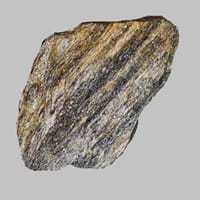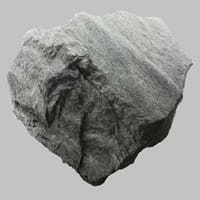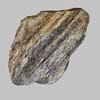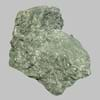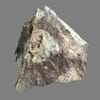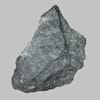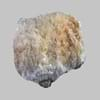Mylonite and Phyllite
Definition
Definition
Mylonite is a metamorphic rock formed by ductile deformation during intense shearing encountered during folding and faulting, a process termed cataclastic or dynamic metamorphism
Phyllite is a fine-grained metamorphic rock with a well-developed laminar structure, and is intermediate between slate and schist rocks
History
Origin
New Zealand
Unknown
Discoverer
Unknown
Unknown
Etymology
From Greek mulōn mill + -ite
From Greek phullon leaf + -ite1
Class
Metamorphic Rocks
Metamorphic Rocks
Sub-Class
Durable Rock, Medium Hardness Rock
Durable Rock, Soft Rock
Family
Group
Not Applicable
Not Applicable
Other Categories
Fine Grained Rock, Opaque Rock
Coarse Grained Rock, Fine Grained Rock, Medium Grained Rock, Opaque Rock
Texture
Texture
Foliated
Phyllitic Sheen, Slaty
Color
Black to Grey
Black to Grey, Light Greenish Grey
Maintenance
Less
More
Durability
Durable
Durable
Water Resistant
Yes
No
Scratch Resistant
Yes
No
Stain Resistant
No
No
Wind Resistant
No
No
Acid Resistant
No
No
Appearance
Dull, Banded and Foilated
Crinkled or Wavy
Uses
Architecture
Interior Uses
Decorative Aggregates, Interior Decoration
Decorative Aggregates, Floor Tiles, Homes, Interior Decoration
Exterior Uses
As Building Stone, As Facing Stone, Paving Stone, Garden Decoration
As Building Stone, As Facing Stone, Garden Decoration
Other Architectural Uses
Curbing
Curbing
Industry
Construction Industry
for Road Aggregate, Landscaping, Roadstone
As Dimension Stone, Building houses or walls, Cement Manufacture, Construction Aggregate, for Road Aggregate, Raw material for the manufacture of mortar, Roadstone
Medical Industry
Not Yet Used
Not Yet Used
Antiquity Uses
Artifacts, Monuments
Artifacts, Sculpture
Other Uses
Commercial Uses
Creating Artwork, Gemstone, Jewelry
Cemetery Markers, Commemorative Tablets, Creating Artwork, Writing Slates
Types
Types
Blastomylonites, Ultramylonites and Phyllonites
Not Available
Features
Surfaces are often shiny
Easily splits into thin plates, Is one of the oldest rock, Surfaces are often shiny
Archaeological Significance
Monuments
Used
Not Yet Used
Famous Monuments
Data Not Available
Not Applicable
Sculpture
Used
Used
Famous Sculptures
Data Not Available
Data Not Available
Pictographs
Used
Used
Petroglyphs
Used
Used
Figurines
Used
Used
Fossils
Absent
Absent
Formation
Formation
Mylonites are ductilely deformed rocks formed by the accumulation of large shear strain, in ductile fault zones.
Phyllite is a metamorphic rock which is formed by regional metamorphism of argillaceous sediments since their cleavage arose due to deviatoric stress.
Composition
Mineral Content
Porphyroblasts
Albite, Alusite, Amphibole, Apatite, Biotite, Chlorite, Epidote, Feldspar, Garnet, Graphite, Hornblade, Kyanite, Micas, Muscovite or Illite, Porphyroblasts, Quartz, Sillimanite, Staurolite, Talc, Zircon
Compound Content
Aluminium Oxide, Calcium Sulfate, Chromium(III) Oxide, Iron(III) Oxide, Magnesium Carbonate, Silicon Dioxide
CaO, Carbon Dioxide, MgO
Transformation
Metamorphism
No
No
Types of Metamorphism
Not Applicable
Not Applicable
Weathering
Yes
Yes
Types of Weathering
Biological Weathering, Chemical Weathering, Mechanical Weathering
Biological Weathering, Chemical Weathering, Mechanical Weathering
Erosion
Yes
Yes
Types of Erosion
Chemical Erosion, Sea Erosion, Wind Erosion
Chemical Erosion, Coastal Erosion, Glacier Erosion, Water Erosion, Wind Erosion
Properties
Physical Properties
Hardness
3-4
1-2
Grain Size
Fine Grained
Medium to Fine Coarse Grained
Fracture
Conchoidal
Conchoidal
Streak
White
White
Porosity
Highly Porous
Highly Porous
Luster
Shiny
Phyllitic
Compressive Strength
1.28 N/mm2
32
Not Available
Cleavage
Conchoidal
Crenulation and Pervasive
Toughness
Not Available
1.2
Specific Gravity
2.97-3.05
2.72-2.73
Transparency
Opaque
Opaque
Density
2.6-4.8 g/cm3
2.18-3.3 g/cm3
Thermal Properties
Specific Heat Capacity
1.50 kJ/Kg K
3
Not Available
Resistance
Heat Resistant, Impact Resistant, Pressure Resistant
Heat Resistant, Pressure Resistant, Water Resistant
Reserves
Deposits in Eastern Continents
Asia
China, India, Indonesia, Saudi Arabia, South Korea
Afghanistan, Bangladesh, Bhutan, China, India, Japan, Kazakhstan, Malaysia, Pakistan, Russia, Thailand, Turkey, Vietnam
Africa
Eritrea, Ethiopia, Ghana, South Africa, Western Africa
Egypt, Ethiopia, Morocco, Nigeria, South Africa
Europe
England, Finland, France, Germany, Great Britain, Greece, United Kingdom
Austria, England, France, Georgia, Germany, Italy, Liechtenstein, Monaco, Norway, Slovenia, Spain, Sweden, Switzerland
Others
Not Yet Found
Not Yet Found
Deposits in Western Continents
North America
USA
Canada, Costa Rica, Cuba, Mexico, Panama, USA
South America
Not Yet Found
Brazil, Colombia, Guyana
Deposits in Oceania Continent
Australia
Central Australia, Western Australia
New South Wales, New Zealand, Queensland
All about Mylonite and Phyllite Properties
Know all about Mylonite and Phyllite properties here. All properties of rocks are important as they define the type of rock and its application. Mylonite and Phyllite belong to Metamorphic Rocks.Texture of Mylonite is Foliated whereas that of Phyllite is Phyllitic Sheen, Slaty. Mylonite appears Dull, Banded and Foilated and Phyllite appears Crinkled or Wavy. The luster of Mylonite is shiny while that of Phyllite is phyllitic. Mylonite is available in black to grey colors whereas Phyllite is available in black to grey, light greenish grey colors. The commercial uses of Mylonite are creating artwork, gemstone, jewelry and that of Phyllite are cemetery markers, commemorative tablets, creating artwork, writing slates.
|
||
|
||
|
